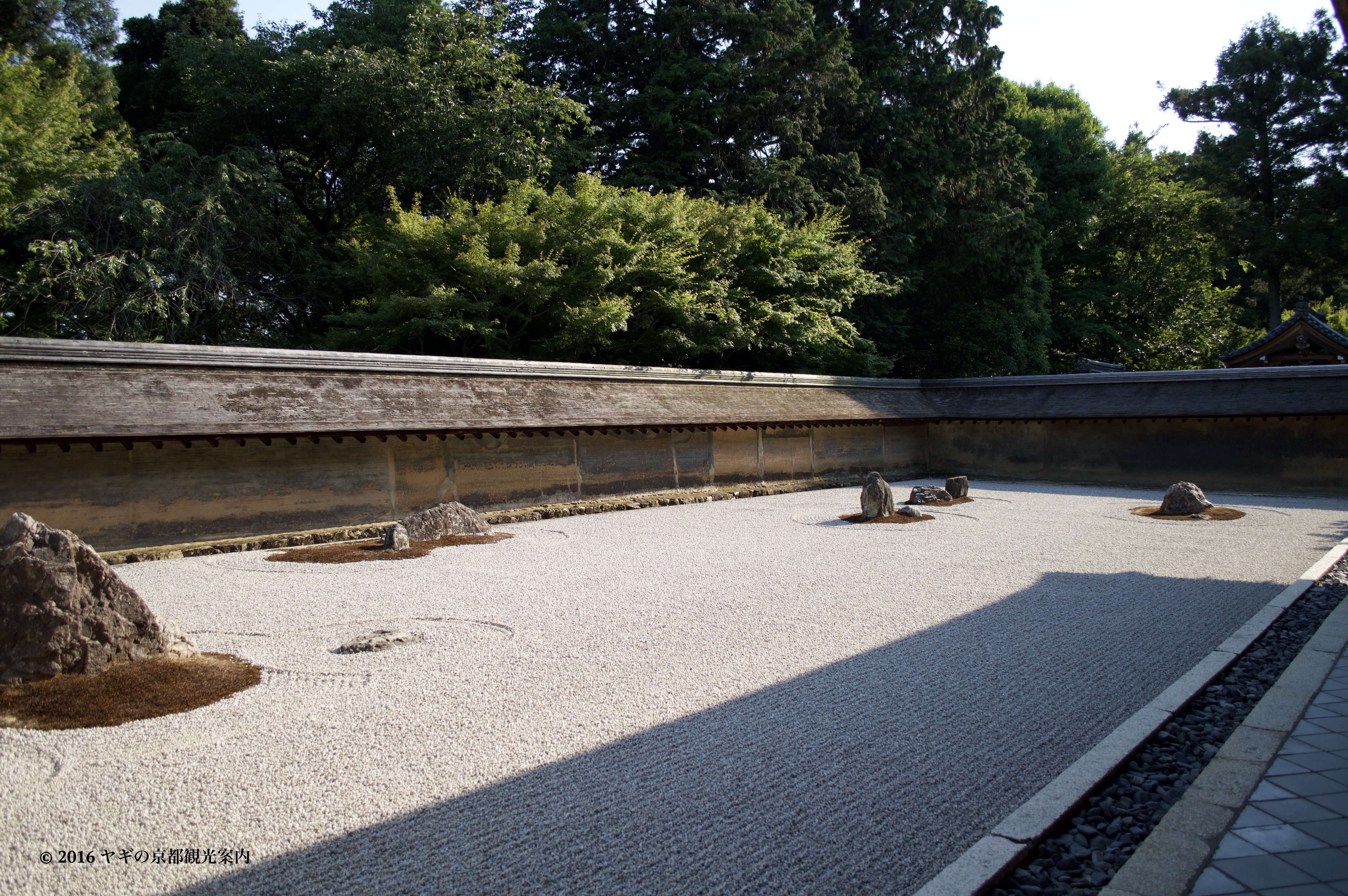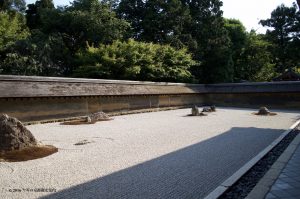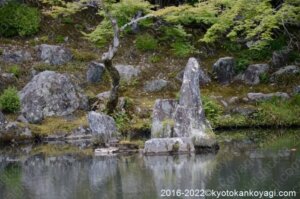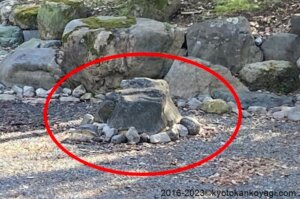THE GIST OF THIS ARTICLE
- This page Introduction, the meaning of Japanese gardens, Karesausui of pre-Muromachi era, and Karesansui of post-Muromachi era
- Page 2 The reasons for the development
The following is the contents of this article.
Introduction
The rock garden of Ryoanji temple is often called “Zen garden” though it sounds strange to Japanese people. We never call it Zen garden at all. It is a Karesansui (garden).
In this post, we learn what Karesansui is overviewing a short history of it. 合掌
What do Japanese traditional gardens mean?
Karesanui garden is a type of Japanese traditional garden which hides our respect and gratitude for nature.

It’s a long story. Check out the link below.

The way of traditional garden making is described in Sakuteiki , the oldest text book for Japanese gardening written in the 11th century.

It is the most important and influential book for Japanese gardening.
Sakuteiki put it:
”石を立てん事、まづ大旨をこゝろふべき也。
一、地形により、池のすがたにしたがひて、よりくる所々に、風情をめ□□□□、生得の山水をおもはへて、その所々は□こそありしかと、おもいひよせ〱たつべきなり。”
Translation (summary):
To make gardens, remember the following;
- Make a close inspection of the land and pond(s), Compose a garden as though it was a landscape in nature taking into consideration what real mountains and water (sea, river, stream. pond, etc.) are.

In a nutshell, Sakuteiki wants a land and at least one pond. And it asks garden designer and constructor to duplicate nature in the gardens they make.
The gardens described in Sakuteiki belong to residences of aristocrats.They were large enough to have ponds and streams.

Of course there were many types of gardens since 11th century. But they are in the ways Sakuteiki indicates because the foundation of Japanese garden making is written in it.
Karesansui of pre-Muromachi period

Summary of the Karesansui in Sakuteiki. We call it “Karesansui of Pre-Muromachi period.”
- The Karesansui of pre-Mromachi ear is an exception. It is a part of a large garden, not a individual garden.
- It is found in artificial mountains/ hills.
Sakuteiki also describes Karesansui.
”池もなく鑓水もなき所に、石をたつる事あり、これを枯山水となづく。”
Karesansui: (In some place in a garden,) To place rocks on the ground, not in ponds or streams.
Basically, rocks in a traditional garden are stuck in water (usually a pond or a small steam) and Sakuteiki says that we can place rocks in Tsukiyama (artificial small mountain ) or Nosuji (a peak of small artificial hill ) exceptionally.

Take a look at the photo. Rocks are in the pond. Under the surface, these rocks are surrounded by small rocks which work as reinforcement. That’s a basic way to place rocks.
On the other hand, There also are rocks behind them and they are just on the ground (actually they are stuck into the ground), not surrounded by any rocks.
The Karesansui of post-Muromachi period

Summary of the Karesansui of Post-Muromachi period.
- The Karesansui of post-Muromachi era is not a part of a large garden. It is an Individual one.
- It is found on a flat place.

Now take a look at the rock garden of Ryoanji.
- Ryoanji has a large stroll garden but the rock is separated from is with walls, i.e., it is a individual garden.
- The garden is flat and has no artificial mountains.
In next chapter, we learn how such gardens were developed.






